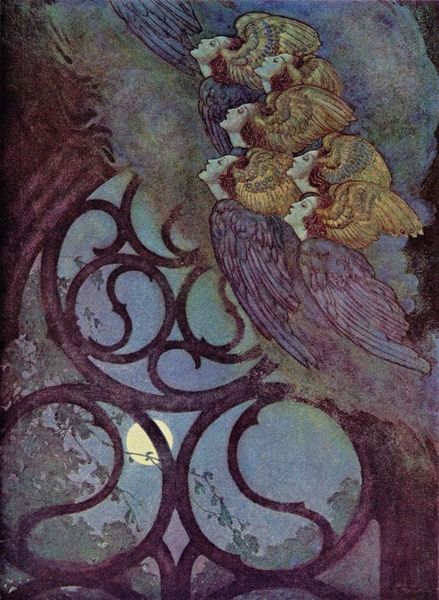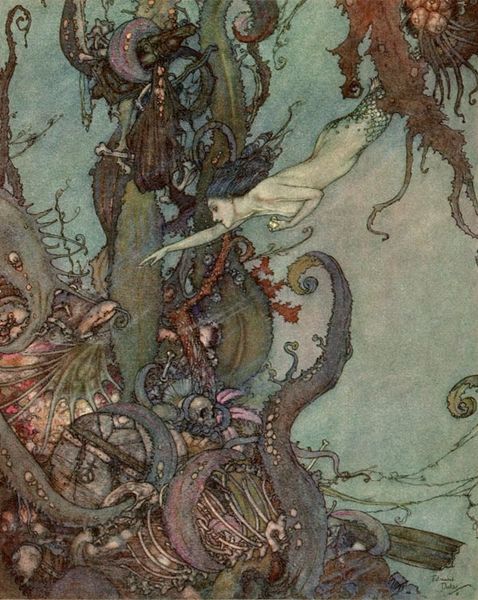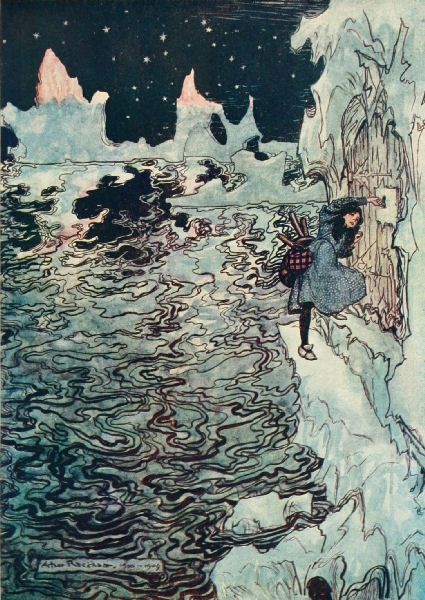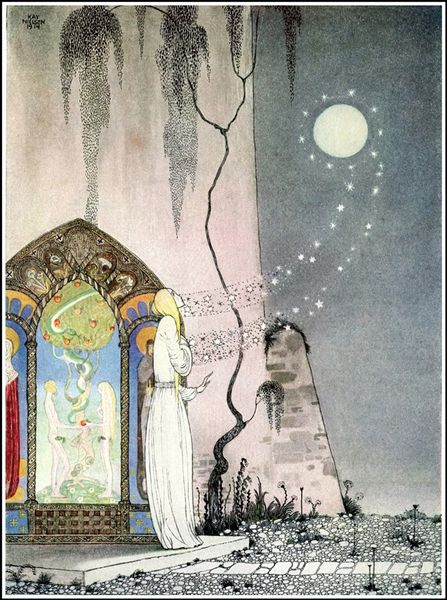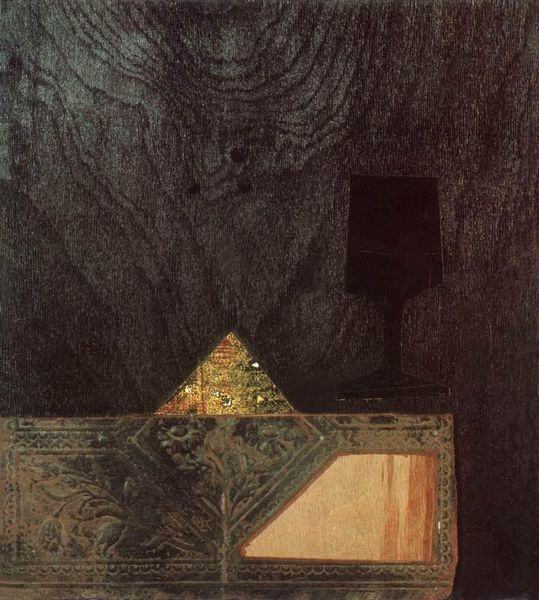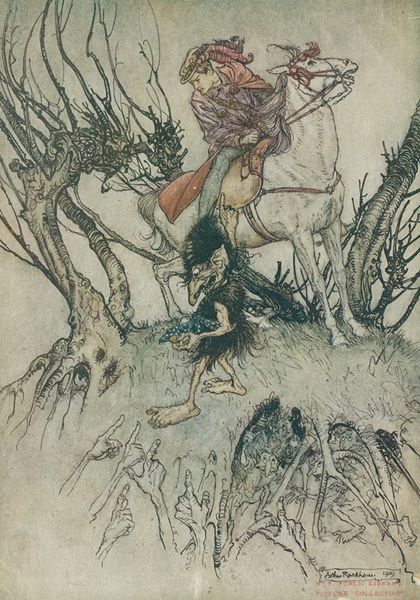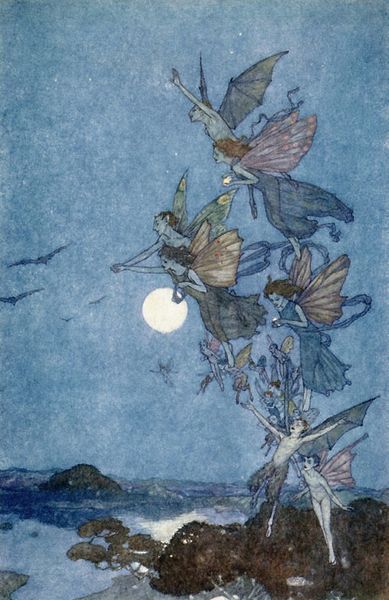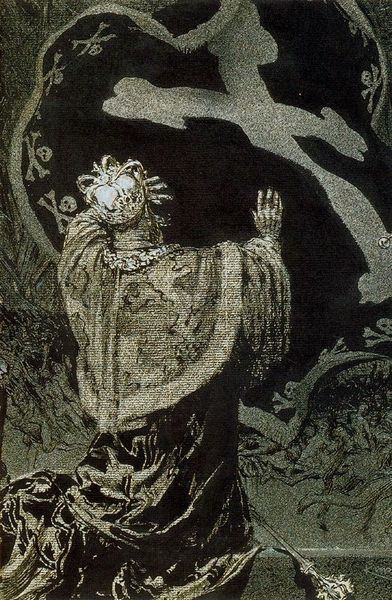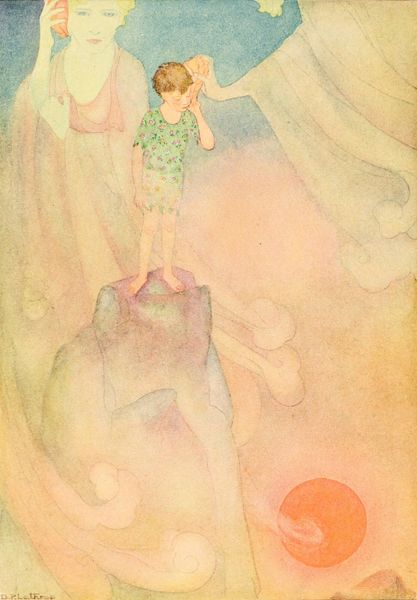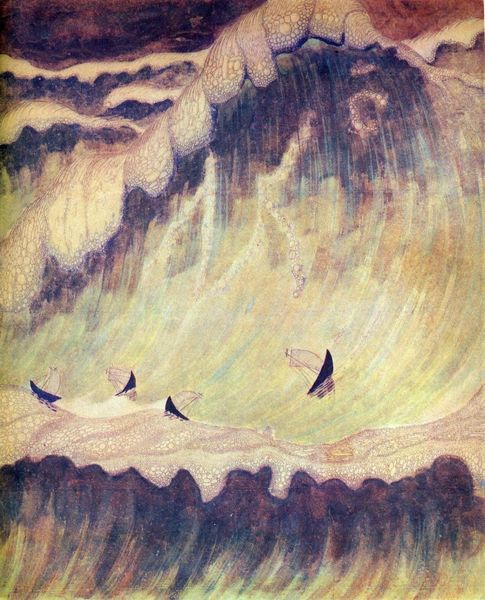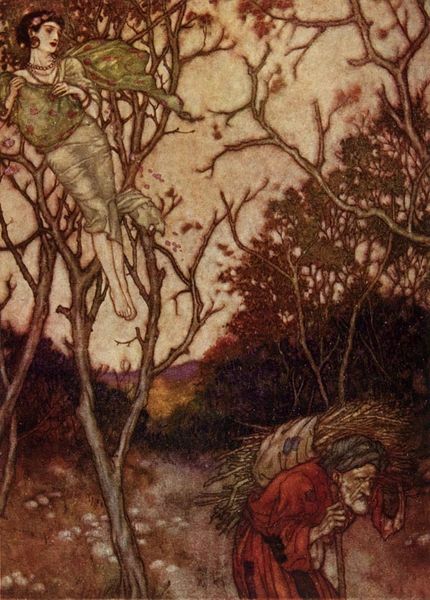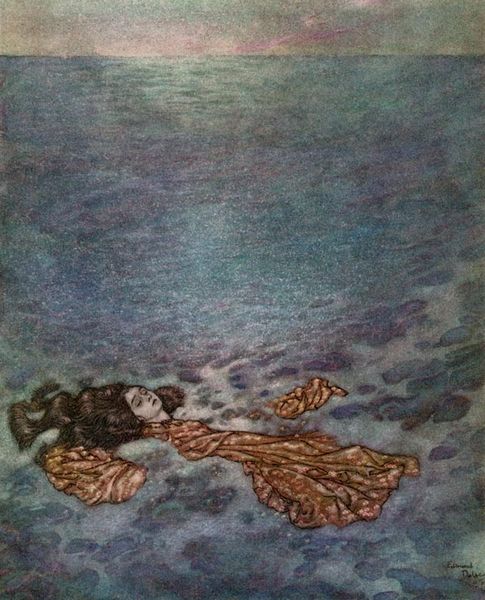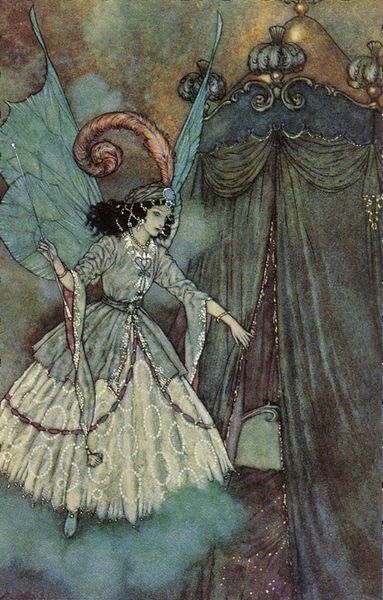
painting, paper, watercolor, ink
#
painting
#
landscape
#
figuration
#
paper
#
watercolor
#
ink
#
coloured pencil
#
orientalism
#
symbolism
#
watercolour illustration
#
decorative-art
#
mixed media
#
watercolor
Copyright: Edmund Dulac,Fair Use
Editor: So this is Edmund Dulac’s “The Sleeve of Night, The Rubaiyat of Omar Khayyam,” rendered in ink and watercolour. It evokes such a dreamy, ethereal quality with its depiction of a floating figure draped in stars over what appears to be a distant tower. What do you see in this piece? Curator: I’m struck by the compositional strategies at play here. Note the pronounced verticality established by the figure’s elongated form, which is cleverly contrasted with the horizontal spread of the misty landscape below. Dulac uses this directional tension to guide the viewer's eye, first upward toward the ornate figure, then down to the minimalist architecture at the bottom. Consider also the colour palette—how the limited range of muted blues, greens, and greys contributes to the illustration's subdued tone. How does the monochromatic colour story inform your perception of the illustration? Editor: It amplifies that feeling of dreaminess. I can almost feel the cool night air. It's interesting how Dulac avoids brighter colours. But what does that stylistic decision emphasize, exactly? Curator: Precisely. The reduced palette throws formal properties into stark relief. It invites close consideration of line, texture and value, and invites the viewer to observe more keenly, more critically. Semiotically speaking, the lack of vibrant colours here isn't an absence. The restraint creates space for texture and symbolic import of form and shape, thereby shaping meaning itself. Now, let’s think about the contrast: the minutely detailed celestial robe is counter-posed against the flat expanse of clouds. Does that play with flatness change our relationship to the image? Editor: Yes! It sort of pulls me in and pushes me away at the same time, because some elements seem so tactile, while the rest feels purely atmospheric. Curator: A powerful observation. The piece uses visual disjunction to create visual dynamism. Thank you for sharing your initial observations. Editor: Thank you! I feel like I understand the relationship between the forms a lot more now.
Comments
No comments
Be the first to comment and join the conversation on the ultimate creative platform.
